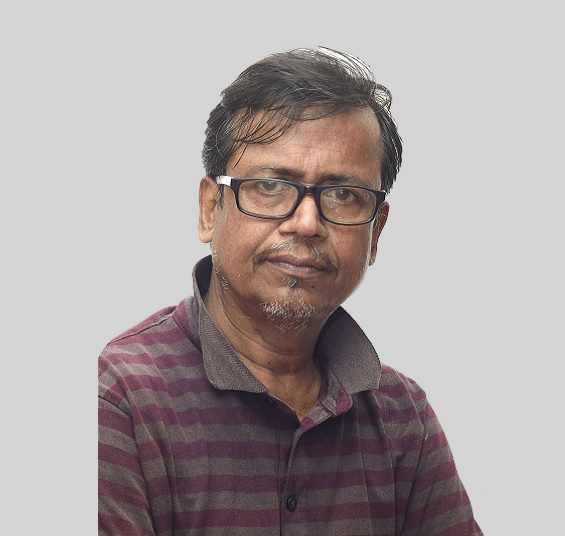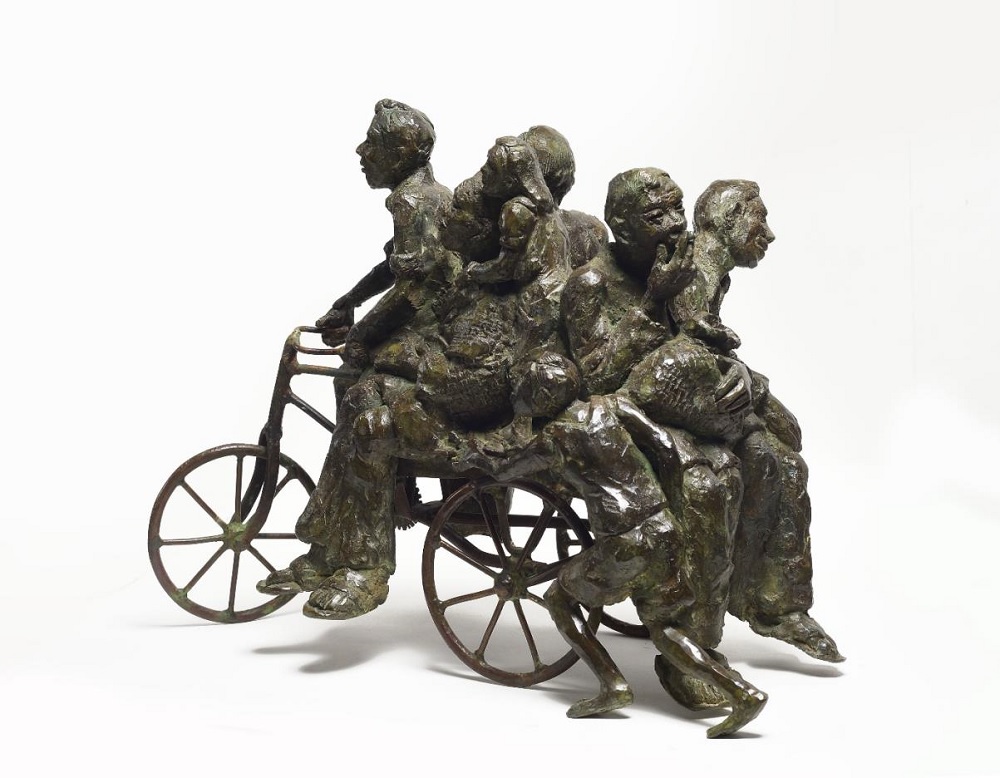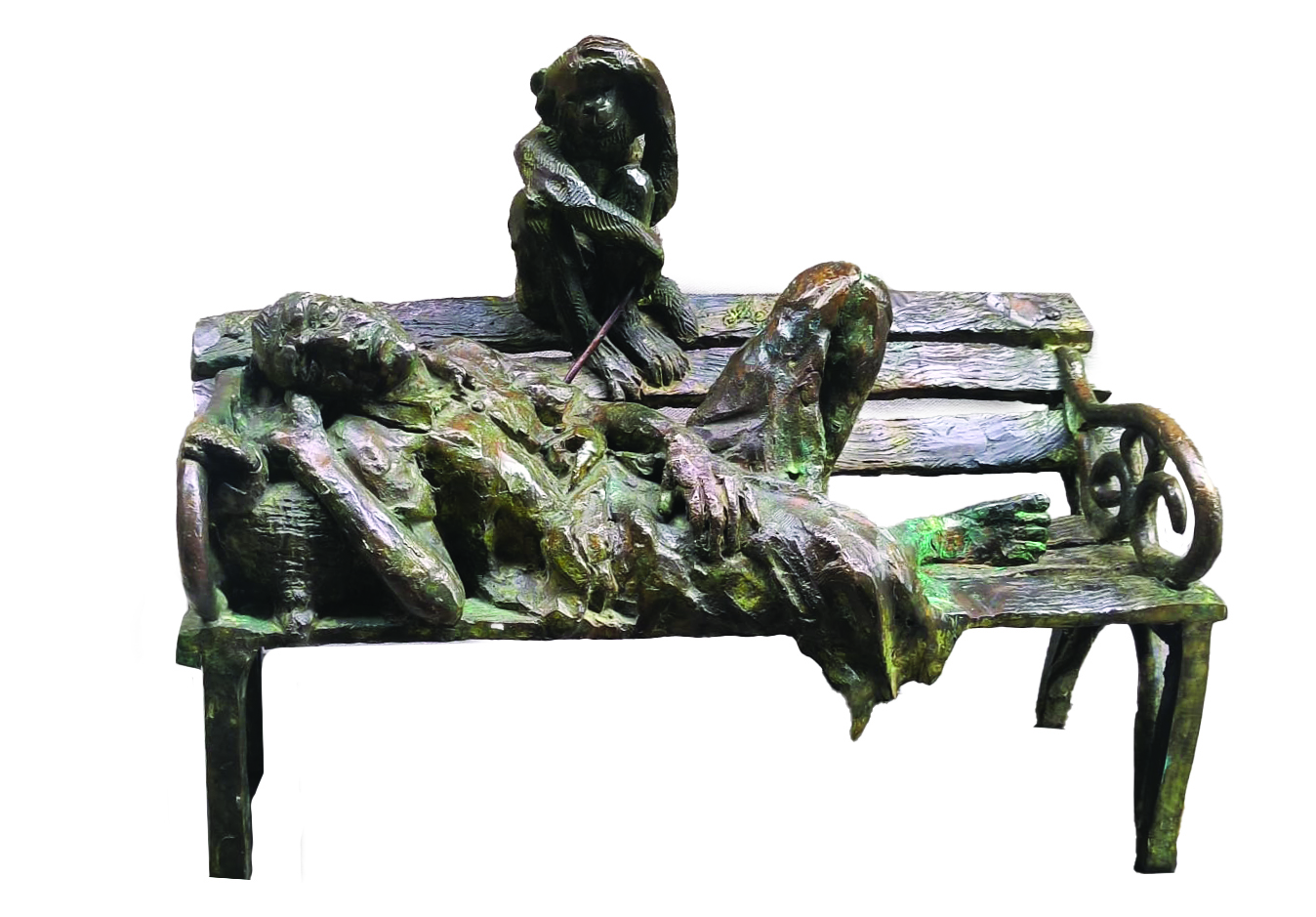At the first encounter with my work what comes to mind is that it is a political statement about the huge chasm between the “haves” and the “have-nots”. Me myself has very emphatically contradicted this view. True, I came from a very poor, poverty stricken background and has known the depths of deprivation and despair. I paint the milieu I come from and depicts its darkness unflinchingly yet with a sly humor. But I also have a very discerning eye for the simple joys and emotions in the everydayness of that life and my surroundings. No matter where you come from the nature of humanity is the same. My art aspires to be what Edward Steichen calls in his Introduction to the 1955 Family of Man Exhibition at MOMA, “a mirror of the essential oneness of mankind”.
I graduated from the College of Visual Arts under the tutelage of artist Shuvaprasanna. I started my career primarily as a painter. (I paint the humdrum happenings in the lives of the people he is surrounded by. The palette is very dark, illuminated by his keen observation of the goings-on in the neighbourhood lanes and by-lanes. I have also painted several portraits of the people who inhabit his world.) Soon moved to sculpture as he often worked alongside adjoining idol makers. Along the way I found my true strength in terracotta sculptures.
What is amazing about the sculptures displayed in my exhibition, is the deftness and ease with which he handles multiple human figures. If you look closely, you find that no two figures resemble each other. They are all individuals who have gathered together – perhaps to read the Ganashakti, gaze in amazement at Goddess Durga or queue up to buy a cinema ticket. The sculptures are normally depiction of human heads, stylised or otherwise, or objects seen.





